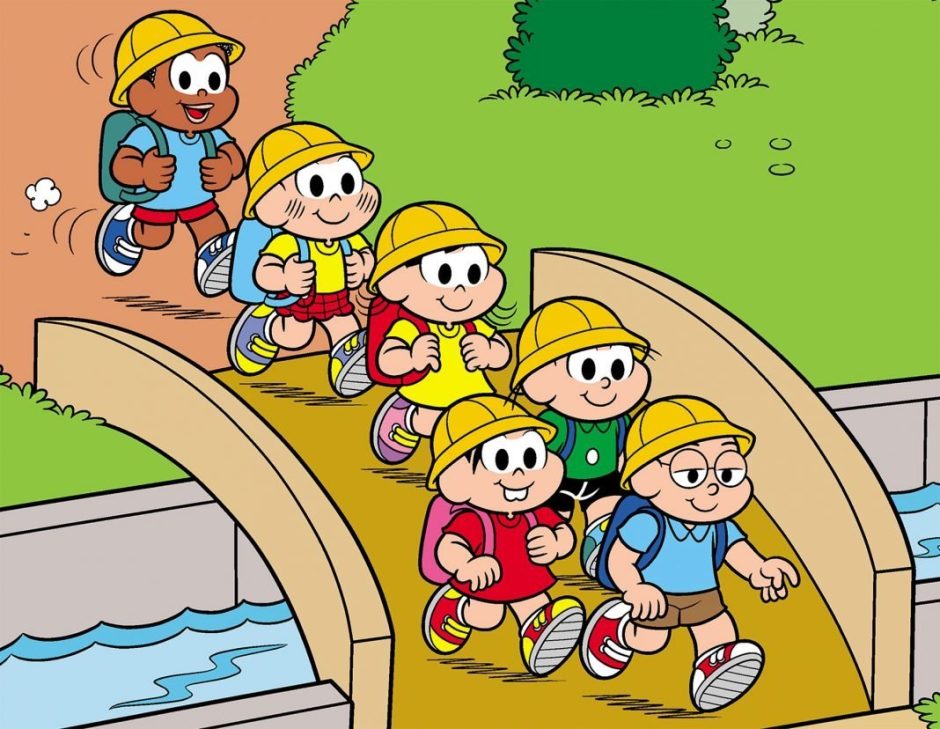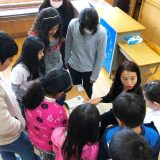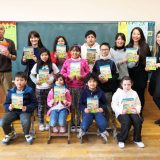Famous Brazilian cartoonist Mauricio de Sousa has created a manga introducing Japanese school life to Brazilian children who have migrated to Japan.
Well-known for his “Monica’s Gang” series, the 82-year-old resident of Sao Paulo uses his new comic book to depict unique Japanese school culture, including students taking turns serving lunch and going on school trips, through illustrations and Portuguese captions.
In the book, Monica — the main character from de Sousa’s popular series — and her friends come to Japan and attend school. They encourage other Brazilian-born children to overcome cultural barriers and become accustomed to school life in Japan.
The manga covers Japanese school life in detail, showing scenes of students going to school in groups, changing to indoor shoes while in the school building and saying in unison “itadakimasu” before meals.
It introduces the shitajiki (pencil board), which is not used in Brazil, as well as school excursions and Sports Day, fixtures at Japanese schools.
There is also a scene reminding parents and guardians that they must contact the school when their child is absent.
De Sousa often visits Japan and holds lectures for Brazilian immigrants. He decided to publish the special manga after learning that Brazilian children have had difficulties getting used to school life here.
Based on stories he heard from teachers, he finished the book at the start of October, covering all the necessary expenses himself.
So far, approximately 2,000 copies have been given out to children in Shiga, Aichi, Gifu, Mie, Shizuoka and Gunma prefectures, where there are many Japanese-Brazilians, with plans to publish more if necessary.
Chiebao Nicoly, 8, a third-grader at an elementary school in Konan, Shiga Prefecture, was happy to receive the book.
“It will help me learn about the Japanese school system,” she said. “I think it will also help my friends who come to Japan.”
There are also many children from other countries attending school in Japan, so de Sousa is thinking of publishing versions of his book in Spanish, Korean, Chinese and Tagalog.
“Studying in two languages (their mother tongue and Japanese) will become an invaluable experience for them in the future,” he said. “I hope I can support them through this picture book so that they can utilize this opportunity.”
For inquiries, contact Aya Sasaki from Mauricio de Sousa(Japan Times)



